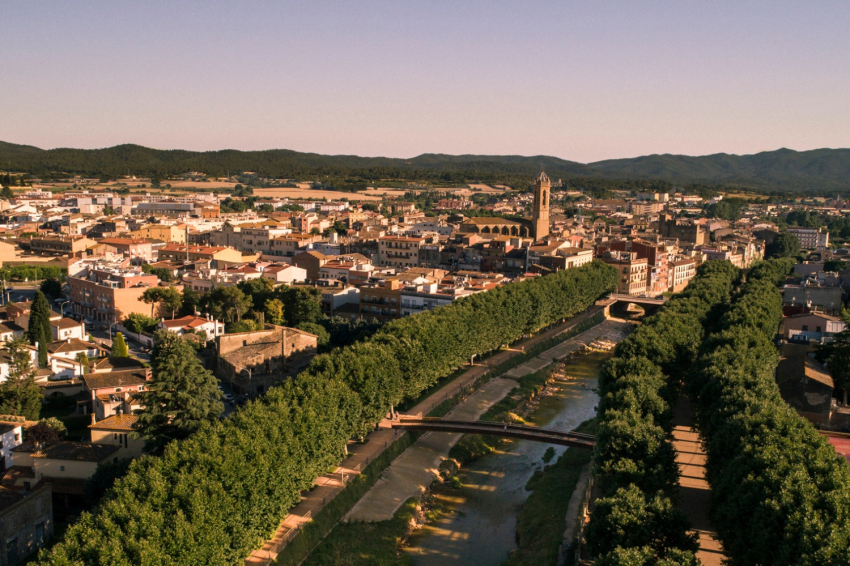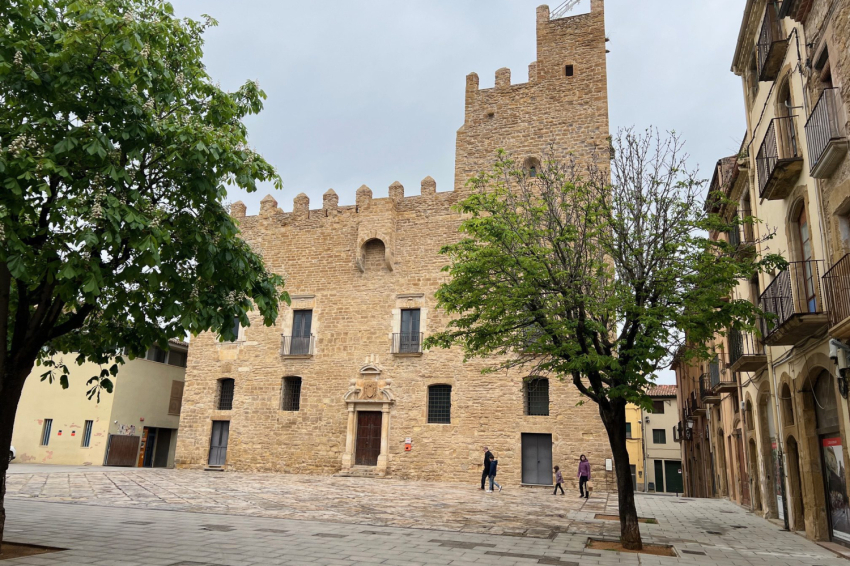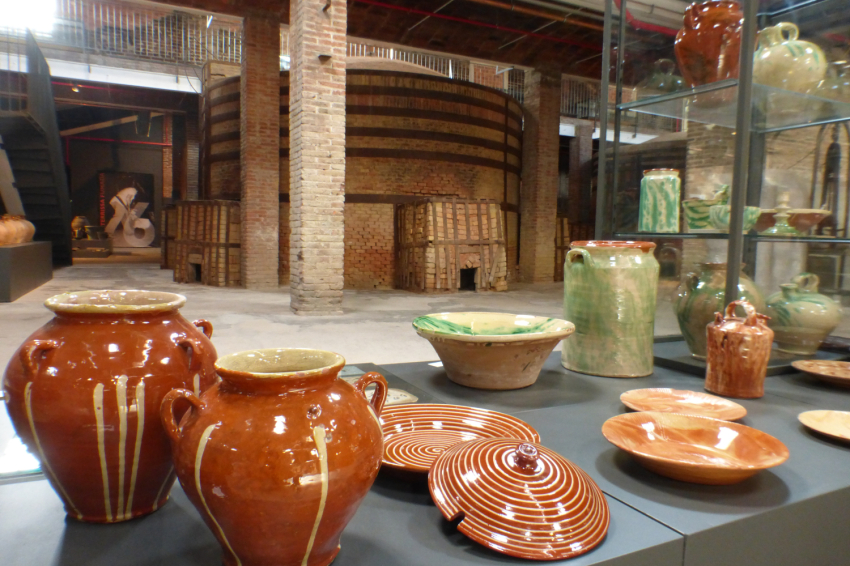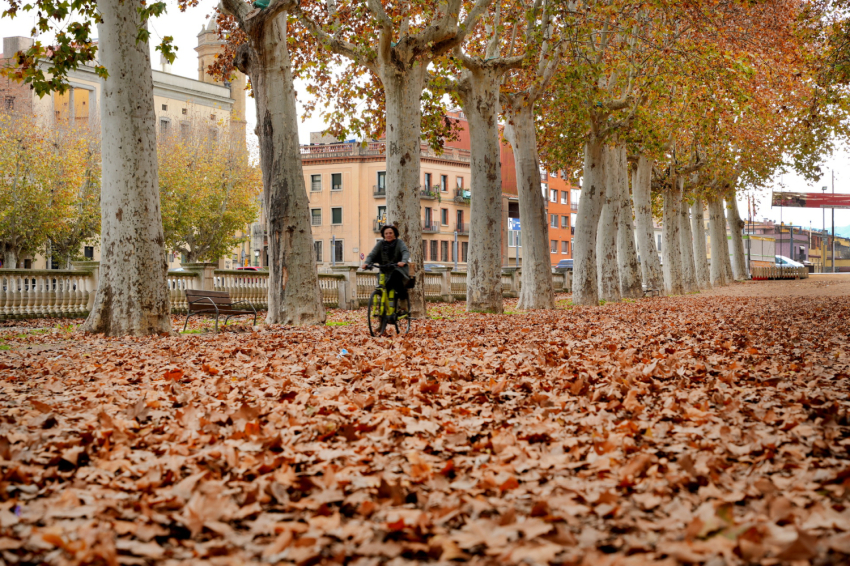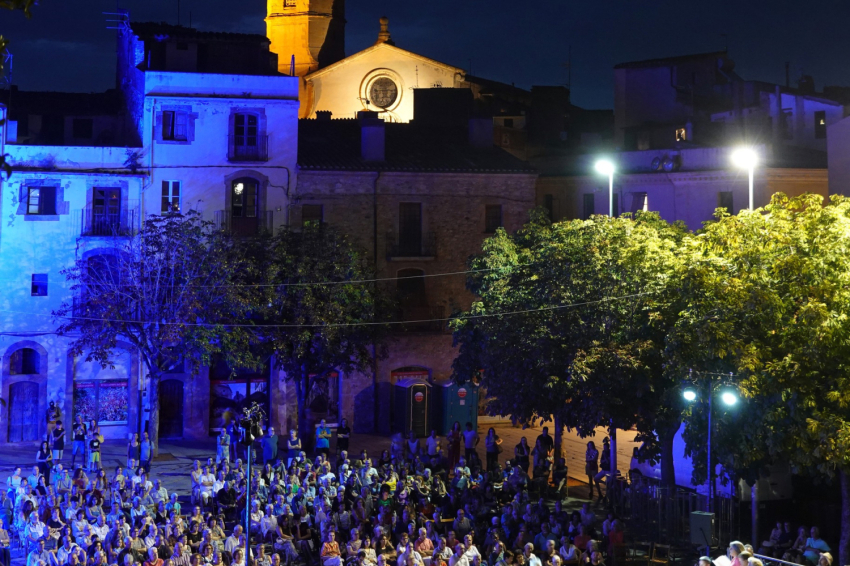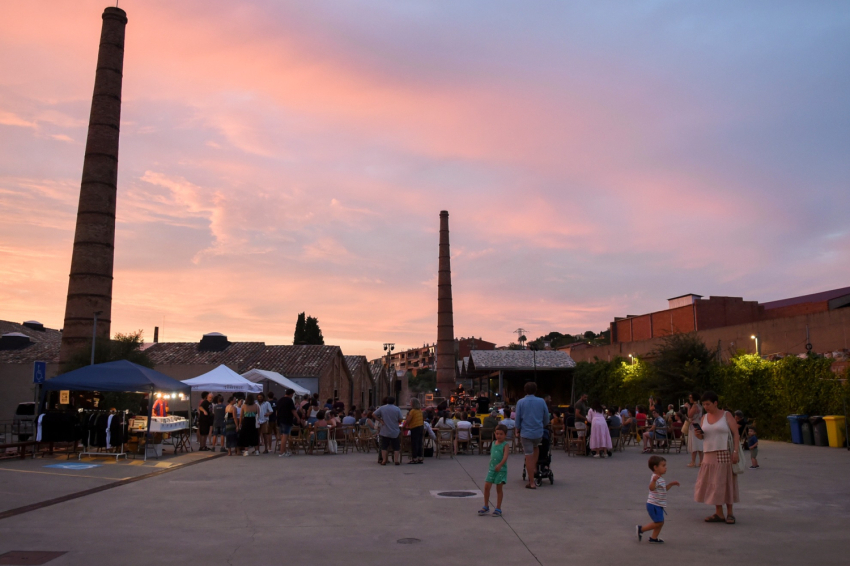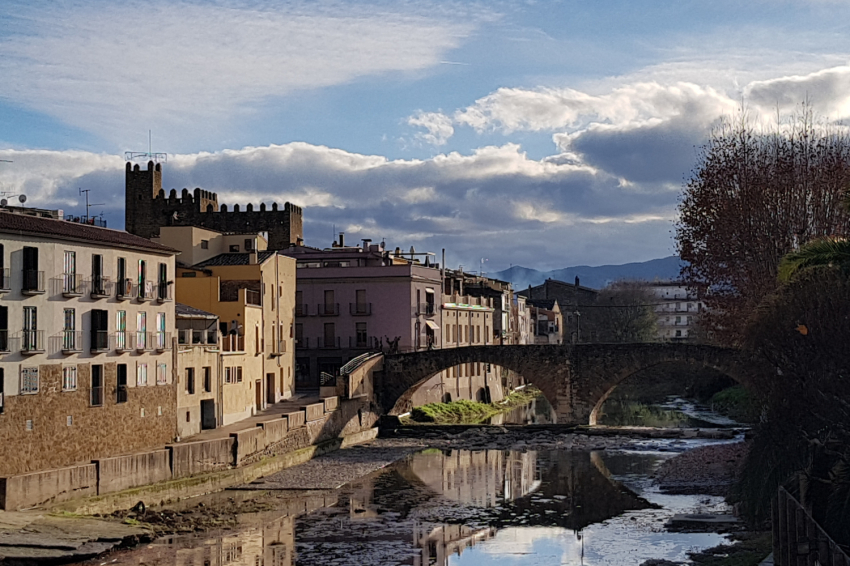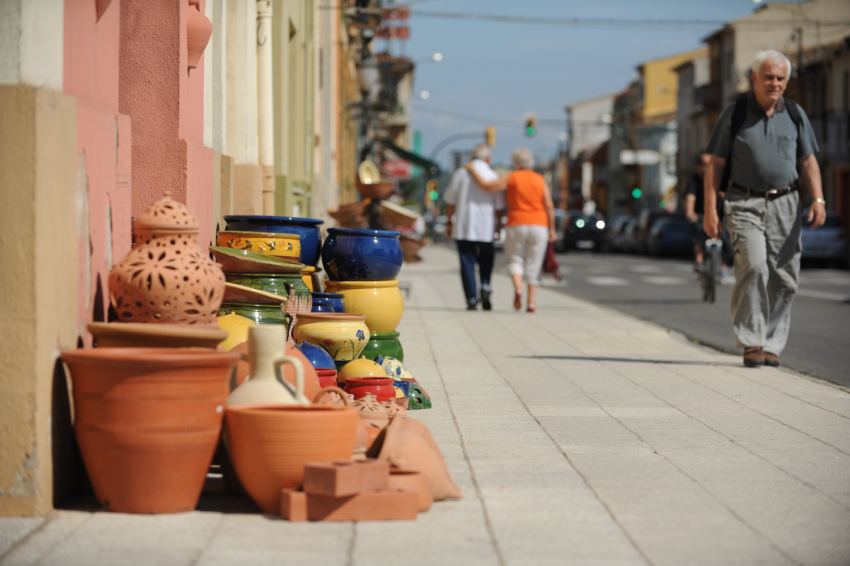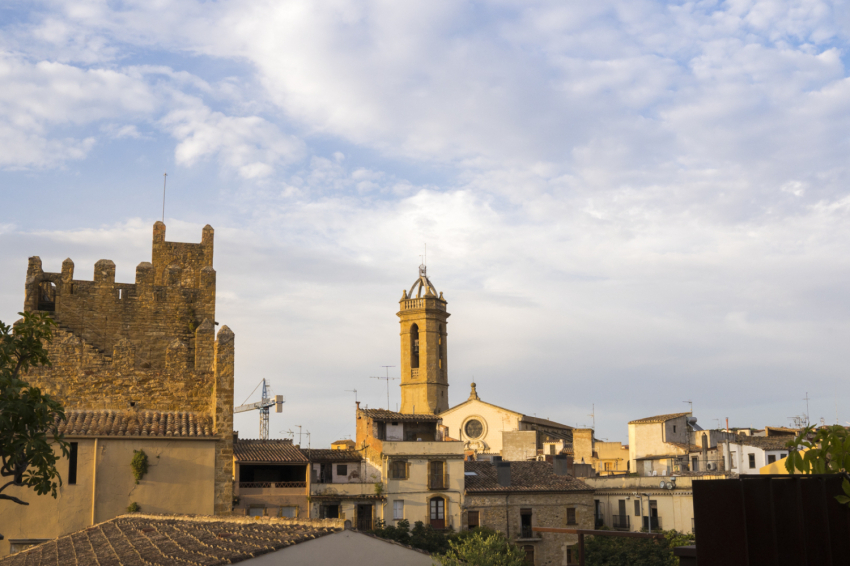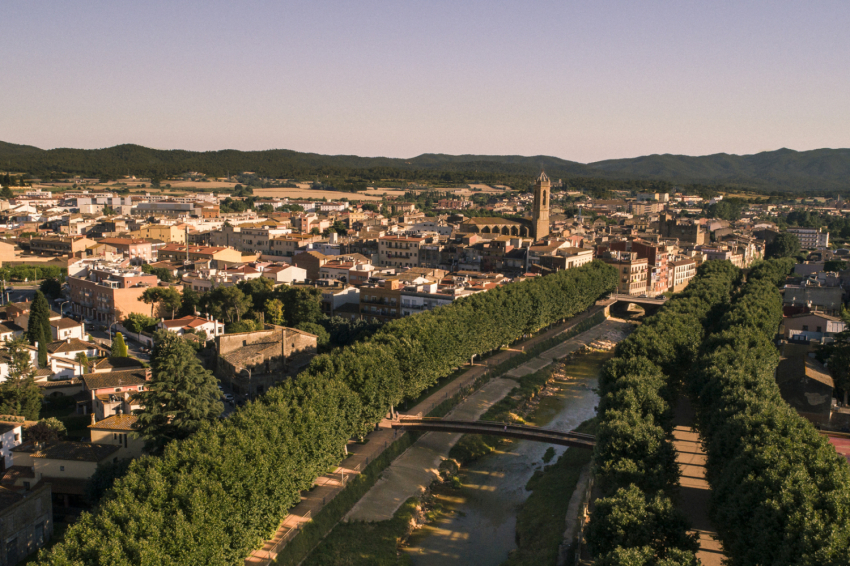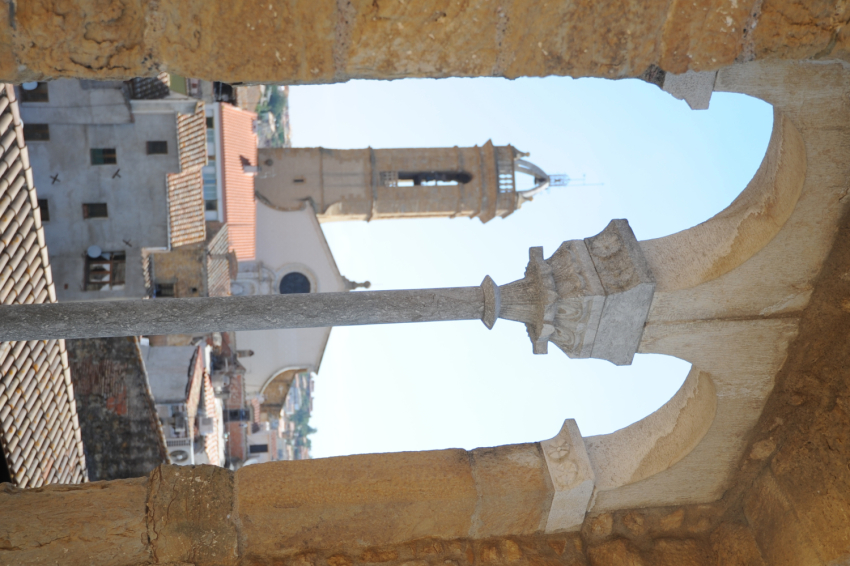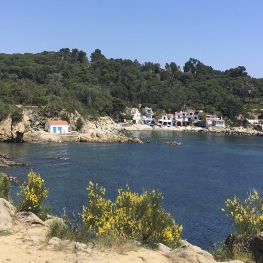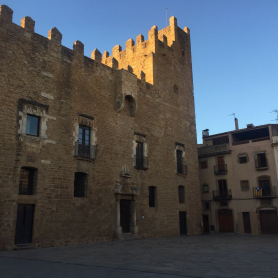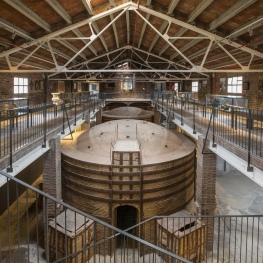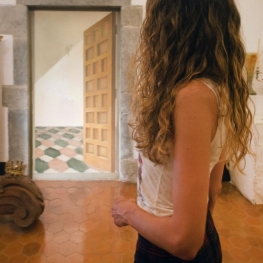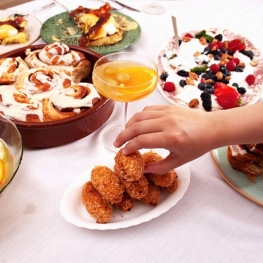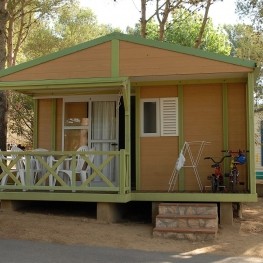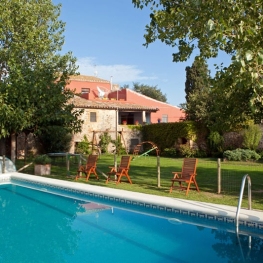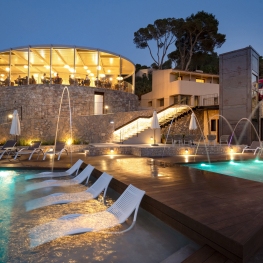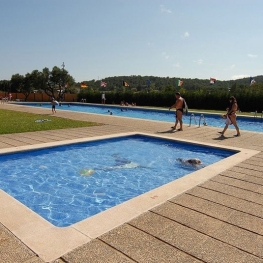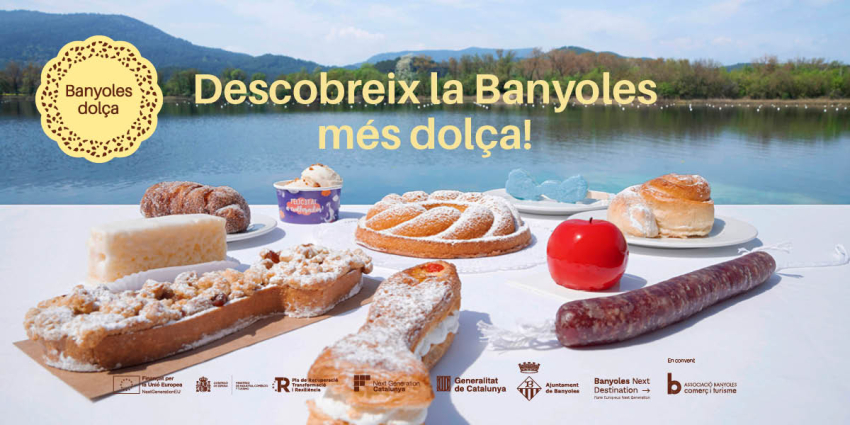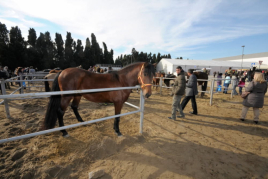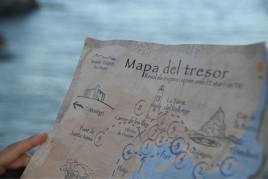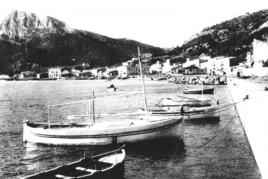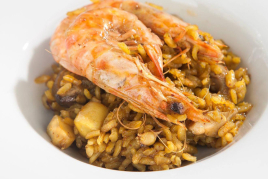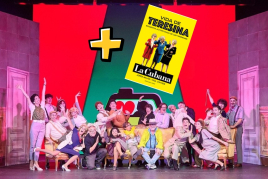La Bisbal d'Empordà
La Bisbal is located in the geographical heart of the Baix Empordà region. Crossed by the Daró River, it enjoys a privileged location that allows you to appreciate both the charm of the Empordà plain, dominated by the town of Castell d'Empordà, and the wooded landscapes of the Gavarres massif. At the foot of this natural area lies the village of Sant Pol, with its Romanesque church.
Known above all for its ceramic tradition, La Bisbal is one of the most prominent pottery centers in Catalonia. This activity is evident in the urban skyline, marked by slender chimneys and numerous shops filled with clay and ceramic pieces, especially on the famous Carrer de l'Aigüeta. The ceramic tradition has led the town council to register the "Ceràmica de La Bisbal" trademark, a protected seal of origin that guarantees the authenticity and quality of ceramic products produced in La Bisbal d'Empordà and other municipalities in its area of influence. The Terracotta Museum of Pottery and Industrial Ceramics, housed in a former tile factory, is a must-see to understand this legacy.
The local economy boasts a dynamic commercial sector, fueled by the tourism that comes to the region. The two international fairs—one dedicated to ceramics and the other to antiques—are a good reflection of this vitality. The city also boasts a very active cultural and leisure scene.
But the visit wouldn't be complete without a taste of our renowned cuisine and pastries. All of this makes for a stimulating and evocative experience.
Places of interest
1. Castell Palau
This place, which was a secular possession of the bishopric of Girona, is documented from the year 904, although the castle is not mentioned until 1180, probably with an even older origin. During the 12th and 13th centuries, its ownership was a source of dispute between the bishopric and the Cruïlles family, until King James I granted the episcopal see full jurisdiction.
The building, restored in the second half of the 20th century, preserves the late Romanesque structure—possibly dating from the late 12th or early 13th century—and the appearance it acquired following the renovations of the 16th and 17th centuries, when it was transformed into a residential palace in the urban centre.
2. Riera Portal
The Riera Gate is the only tower preserved from the ancient walls surrounding La Bisbal, built between the 13th and 14th centuries, where some loopholes can still be seen. Adjacent to this gate, on Riera Street, is Can Caramany, a 15th-century Gothic-Renaissance building that was owned by the Almar family, wealthy merchants in the Middle Ages.
This building features several Gothic windows and a Renaissance window of special interest.
3. Old Bridge
The bridge that crosses the Daró River from the portal in the La Bisbal wall towards Girona has medieval origins, although the current structure dates from 1605. Its construction was carried out at the initiative of Bishop Francisco Arévalo de Zuazo. It consists of two large arches separated by a central pillar, which widens at an angle on both sides.
At this point, a gate with a tower once stood, now replaced by a boundary stone with the Cross of La Bisbal engraved on it.
4. Marimon Asprer Walk
This shady walkway, lined with centuries-old trees on the banks of the Daró River, is an ideal spot for a leisurely stroll. In 1879, the Marimon family donated the land to create a public space, and the following year, in 1880, the path was extended and the first fifty plane trees were planted.
The walk also includes the Mundial, a modernist-style building (1914) that currently hosts cultural activities and is the headquarters of the municipal theatre.
5. Les Voltes
The group of buildings popularly known as Les Voltes extends along the road that connects Palamós with Girona and constitutes the most notable feature of the city's expansion in the mid-19th century. These are porticoed buildings with a ground floor, mezzanine, two floors, and an attic, all with a uniform design, conceived according to Neoclassical principles and with some Romantic details.
They were designed in 1854 by Martí Sureda i Deulovol (l'Escala, 1822-1890). However, the plan remained incomplete, and the last section, located to the east, was not completed until a century later, between 1944 and 1955, when Pelayo Martínez executed it faithfully following the original design.
6. Church of Santa Maria
The first church in La Bisbal, located at that time in a place known as Fontanet, was consecrated in 904 by the Bishop of Girona. No trace of that first church has survived. The current building was erected between 1704 (the year engraved on the presbytery door) and 1757 (the date inscribed on the façade), using some of the materials from the previous construction. However, the bell tower was not completed until 1770.
7. Volta de la Mel
It is located on one side of the Plaza Mayor. This square was once porticoed, and the Volta de la Mel ( Honeycomb Square), built in the 18th century, was part of the old entrance porches. Its name comes from the commercialization of this sweet product. The Plaza Mayor, with its elongated and irregular layout, is one of the liveliest spots in the town, both in terms of commercial and cultural activity.
8. The Voltes of Galí
They were built in 1835 by Joaquim Galí, a merchant who set up his warehouse and fabric store. This complex is a fine example of neoclassical architecture, consisting of a wide porch with six arches supported by stone columns topped with Doric capitals.
Just in front of the Voltes d'en Galí stands the old Town Hall, built in the 16th century and completely remodeled in 1928, during the Noucentista period. Noteworthy is the use of local ceramics in the openings and on the crowning, as well as the high stone relief with the coat of arms of La Bisbal d'Empordà located above the main door.
9. Calle del Call (Jewish Quarter)
The Jewish quarter, or old Jewish neighborhood, of La Bisbal has been documented since 1285. As a vestige of that period, Call Street remains. It is a narrow, winding passageway with no streets running through it, accessed through two gateways, one at each end. In the Middle Ages, these gateways were closed to separate and protect the neighborhood from the rest of the town.
10. Church of La Pietat
The old Hospital Church was rebuilt in 1783, as indicated by the inscription on its façade, and was blessed five years later. The bell tower remained unfinished for almost two centuries and was not completed until 1968, maintaining the building's original style.
The church has a Latin cross layout, with a dome at the transept, which also houses a niche housing the image of Our Lady of Mercy, a prominent 16th-century Renaissance sculpture. According to Josep M. Marquès, the original Church of Our Lady of Mercy was built shortly before 1576.
11. Terracotta Ceramics Museum
The Terracotta Ceramics Museum of La Bisbal d'Empordà, located in the former Terracotta factory (1922), is a benchmark in the preservation and dissemination of the ceramic heritage of the Baix Empordà region. The museum preserves and displays the ceramic industrialization process, integrating original architectural elements such as kilns, chimneys, and ponds.
The permanent exhibition highlights the tradition and quality of Bisbal's master ceramists, establishing a dialogue between history and the present. Temporary exhibitions provide a dynamic and contemporary feel. With its ceramics and medieval surroundings, La Bisbal offers attractions such as the castle-palace, the old bridge, traditional markets, and routes through the Empordà's medieval heritage.
Nearby routes
See all routes »What to do
Castell Palau de la Bisbal d'Empordà
La Bisbal d'EmpordàThe Castell Palau of the Bishops of Girona is an outstanding example…
Terracotta Museu de Ceràmica
La Bisbal d'EmpordàThe Terracotta Ceramic Museum aims to preserve and disseminate the scientific, technical…
Castell Gala Dalí Visita Guiada
La Pera (a 7.7 Km)Enter a world of romanticism and surrealism and enjoy a unique cultural…
Where to eat
L'Espai Gastronomia
Tossa de Mar (a 28.3 Km)Enjoy a place where laughter, festivity, and gastronomy unfold around a large…
Where to sleep
Casa Rural Mas Masaller
Cruïlles, Monells i Sant Sadurní de l'Heura (a 2.4 Km)Isolated farmhouse almost 3 kilometres from La Bisbal de Empordà. The farmhouse…
Talaia Plaza EcoResort
Begur (a 14.1 Km)Live a luxury experience in direct contact with nature at Talaia Plaza…
Càmping Relax-Ge
Mont-Ras (a 11.3 Km)Camping located in Mont-ras, in the geographical center of the Costa Brava,…
Events
Experiences
Self-guided tour L'Estartit, a fishing village. A seafaring…
Torroella de Montgrí - L'Estartit (a 11.7 Km)

